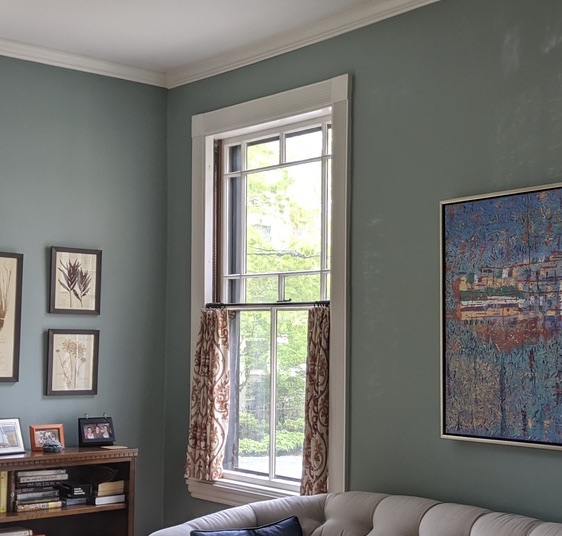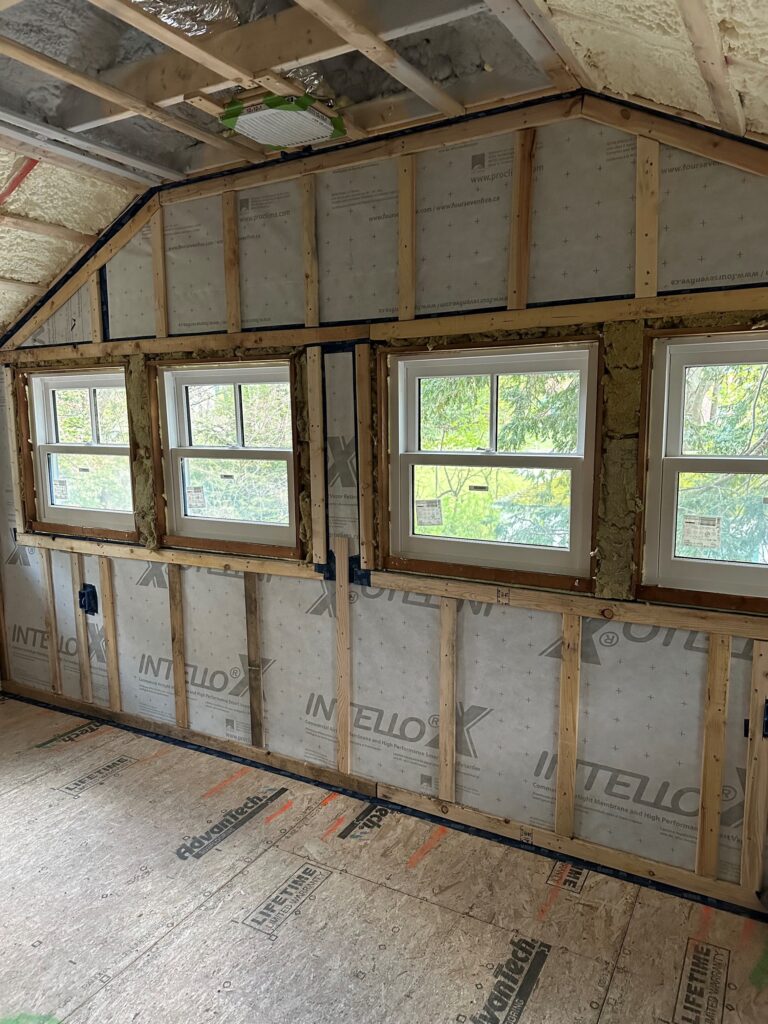Clear(ish) Advice About Window Replacements
October 2023by Rachel White
When homeowners get in touch about improving their home’s performance, cold and drafty windows are often high on their list of complaints. And even if they love their window’s historic character, they are eager to address this weakness in their home’s thermal envelope, especially if they have already done everything you can to air seal and insulate.
Many people we speak with are surprised to learn that replacing their windows will probably not save a lot of energy. After all the internet abounds with claims to the contrary. Here’s what ChatGPT had to say when I asked, “How much energy will I save if I replace my single-paned windows?”
While it’s difficult to provide an exact figure without specific details, studies suggest that replacing single-paned windows with energy-efficient double or triple-paned windows can lead to energy savings ranging from 10% to 25% on annual heating and cooling costs.
More than a decade ago, Michael Blasnik, who at the time was an independent energy consultant and now works for Nest, quantified the energy savings of whole house window replacement for homes in the Boston area at somewhere between 1-4%. Of course, more efficient windows are more widely available now than in the early 2010s, but the impact of window replacements on overall energy use is marginal in most cases — including those where existing windows are original single-paned windows with storms and the replacements are the highly efficient triple-pane windows.
Take for example a project from a couple of years ago where we renovated the kitchen and first floor bathroom, air sealed and insulated the entire building shell, and replaced the gas heating system and window air conditioners with ducted heat pumps. In the main work areas — the kitchen, bathroom, attic, and basement — we installed reasonably efficient double-pane windows (U-factor of .27, which is equivalent to R-3.7).

A restored historic window.
During the planning phase of the project, we also considered replacing the windows outside the work areas, but we ultimately decided not to for two reasons. First, the existing single-paned windows with storms were in reasonable working condition. Second, due to budgetary constraints, the homeowners couldn’t install all new windows without giving up other higher priority scope items, including replacing their ancient and inefficient heating equipment with a heat pump. And the estimated performance gains of replacing all the windows were not enough to justify bumping them higher on the list of priorities.
In the planning phase of the project, we estimated that the work we were proposing to do would yield annual energy savings of 73% (after tracking utility use for two years, we determined that annual energy use savings are actually 80%). How much more could we have saved by replacing all the windows with highly efficient triple-pane units (U-factor of .20 or R5, which is considered best practice for our climate)? A mere 2%.
However, annual energy use savings is not the only important factor to consider. Peak loads, which are the amount of heating or cooling energy that must be added to maintain comfort when it gets very cold or very hot, are equally if not more important. The energy model for this project estimated that triple-glazed replacements throughout the house would have had a significant impact on peak loads: the heating load would have come down by an additional 10%, and the cooling load would have come down by an additional 21%. Unfortunately, these reductions would not have been enough to lower the capacity of the heat pump equipment or simplify the system design. But, sometimes, upgrading an entire house to triple-pane windows can drive down equipment capacity and simplify system design. In such cases, bumping whole house window replacements higher on the priority list makes good sense.
Another reason to consider installing triple-pane windows throughout a house is to improve comfort. On a cold winter’s night our bodies are warmer than the interior surfaces of our building envelope, so we radiate heat to surfaces like windows & walls. Less well-insulated surfaces, such as single-glazed windows or uninsulated walls, will be colder, and so we’ll radiate more heat to those surfaces. Conversely, better insulated surfaces like triple paned windows and insulated walls will be warmer, and so we’ll lose less heat to them making us more comfortable in those spaces. This sensation in combination with drafty air leaks both through or around windows can be another reason one might up the priority level of replacing windows in spaces where folks spend a lot of time.

Triple pane window installation in progress.
For this reason, we typically advocate for new triple-pane windows in spaces being renovated unless there is a historic constraint or strong preference for retaining existing windows — although as you can see from the project described above, we don’t always end up with triple-pane windows. When we don’t, it’s often less about budget and more about design criteria and product availability. We have found that the marginal cost increase of going from a double to a triple-glazed window is no more than 20%. And it’s possible to mitigate these marginal cost increases by selecting less expensive materials (such as fiberglass instead of clad wood), incorporating some fixed windows, which are lower cost than operable windows, and possibly eliminating a window or two.
Outside of spaces being renovated, the case to replace windows is less clear cut and often comes down to the condition of the windows. If they aren’t functioning well or are deteriorating, that may tip the scales towards replacement. On the other hand, older, wood windows can often be repaired and restored at one-third to one-half the cost of replacement. And with the addition of new, high-quality storms, the restored windows would probably be close to as efficient as a new double-pane window. Older, wood windows will last indefinitely if they are properly maintained, whereas the anticipated lifespan of newer windows likely ranges somewhere between 15-30 years depending on material quality.
As with most home renovation and retrofit decisions, there’s no one-size-fits-all approach to windows. We have found that new triple-pane windows make good sense in most although not all newly renovated spaces. They can also make sense in a heavily glazed space, such as a sunroom, that is underutilized because of thermal discomfort, and in a home that experiences substantial street noise. And when planning a comprehensive energy retrofit, it’s worth considering whether upgrading to triple-pane windows throughout the house could tip the balance towards lower capacity HVAC equipment. But outside of these cases — and sometimes even in these cases — many homeowners find that the most sensible approach is to keep their existing windows.